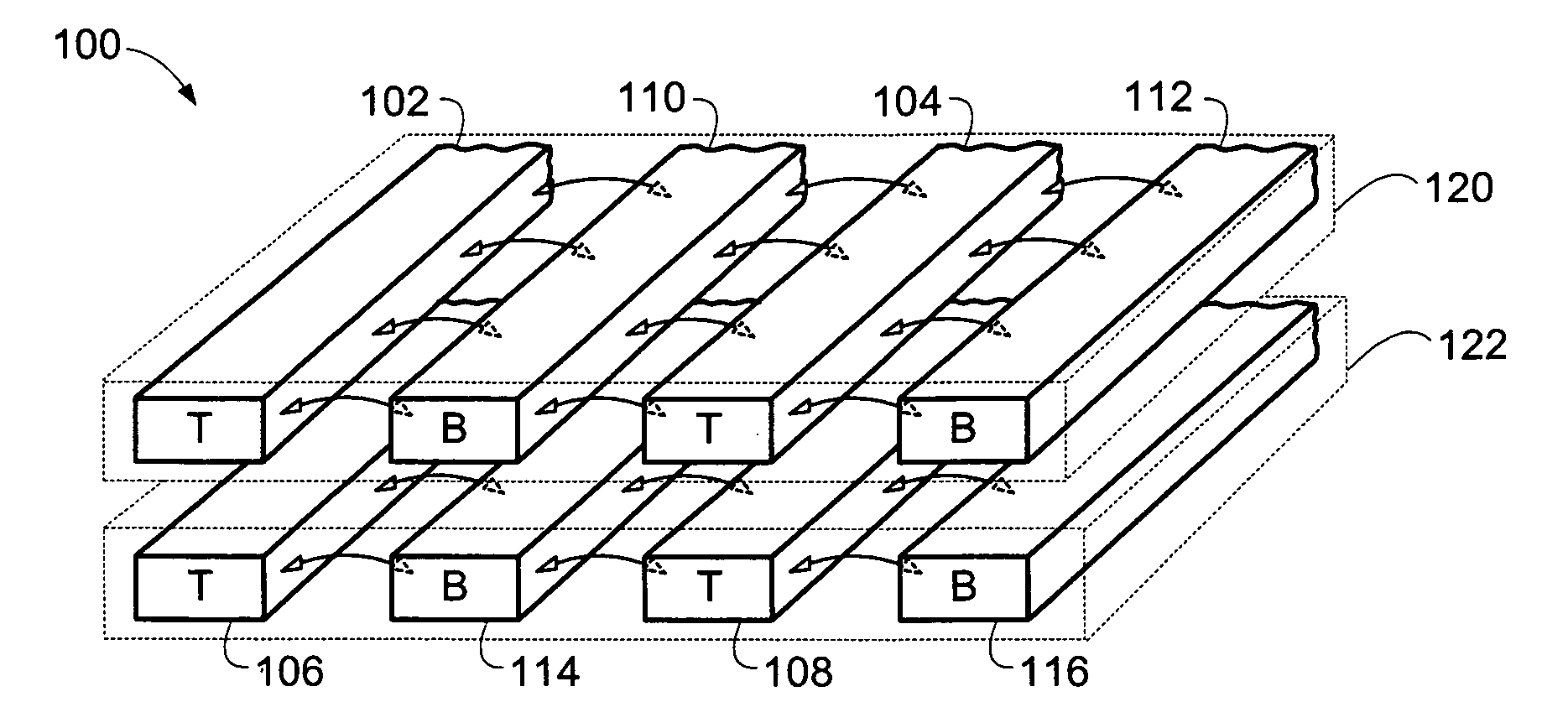Fringe capacitor using bootstrapped non-metal layer
a non-metal layer, capacitor technology, applied in capacitors, semiconductor devices, semiconductor/solid-state device details, etc., can solve the problems of consuming a large area of the ic, and reducing the capacitance density of the fringe capacitor, etc., to achieve minimize or eliminate the parallel plate capacitor, maximize the fringe capacitor, and high density
- Summary
- Abstract
- Description
- Claims
- Application Information
AI Technical Summary
Benefits of technology
Problems solved by technology
Method used
Image
Examples
Embodiment Construction
[0020] When using only fringe-capacitance between metal lines within a given metal layer in constructing metal-to-metal capacitors on an integrated circuit (IC), the ability for matching of unit capacitors may be superior to the matching of unit capacitors whose configuration also includes parallel-plate-capacitance. Likewise, higher capacitive densities may be achieved with capacitors configured using solely fringe-capacitance than with capacitors that also comprise parallel-plate structures. In order to maximize fringe-capacitance, the metal lines or strips used for top and bottom plates of the capacitor may be interdigitated with minimum spacing. Furthermore, by stacking top plate traces on top of each other and bottom plate traces on top of each other, the parallel—or layer to layer—capacitance may be minimized. Thus, a top level layer in a multi-layer process may be used for routing, and all layers below the top level layer, including the bottom layer, may be configured as inte...
PUM
 Login to View More
Login to View More Abstract
Description
Claims
Application Information
 Login to View More
Login to View More - R&D
- Intellectual Property
- Life Sciences
- Materials
- Tech Scout
- Unparalleled Data Quality
- Higher Quality Content
- 60% Fewer Hallucinations
Browse by: Latest US Patents, China's latest patents, Technical Efficacy Thesaurus, Application Domain, Technology Topic, Popular Technical Reports.
© 2025 PatSnap. All rights reserved.Legal|Privacy policy|Modern Slavery Act Transparency Statement|Sitemap|About US| Contact US: help@patsnap.com



